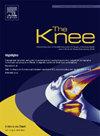The methods of quantifying knee laxity in the ACL injured population: A review
IF 1.6
4区 医学
Q3 ORTHOPEDICS
引用次数: 0
Abstract
Introduction
Anterior Cruciate Ligament (ACL) injuries equate to a large proportion of Emergency Department attendances worldwide and continue to place significant burden on primary care services. Diagnosis of this injury relies on subjective physical examination tests such as the Lachman’s and Pivot Shift test; results of which can vary depending on clinician experience and individual interpretation.
Aims
This review seeks to identify current approaches past and present to objectively measuring knee laxity caused by ACL injury and appraise the methods of the current apparatus’ available to do this within the clinical setting.
Methods
A literature search across three databases (MEDLINE, EMBASE and CINAHL) was conducted, and an inclusion and exclusion criteria applied to the 780 retrieved texts to extract 19 papers fulfilling this objective. Articles published after the year 2000 were considered. The main technologies noted that quantified knee laxity were arthrometry devices, inertial motion units (IMUs), electromagnetic measurement systems (EMS), optical motion capture systems (OMC), and dynamic MRI.
Conclusion
Despite there being a multitude of technologies with capability to accurately measure aspects of knee laxity, there is no agreed objective measure for doing so in the clinical setting. This highlights a need for improved collaboration between the relevant stakeholders to achieve this aim.
量化前交叉韧带损伤人群膝关节松弛度的方法综述
前交叉韧带(ACL)损伤占全世界急诊科就诊人数的很大比例,并继续对初级保健服务造成重大负担。这种损伤的诊断依赖于主观体检,如拉赫曼试验和枢轴位移试验;其结果可能因临床医生经验和个人解释而异。目的:本综述旨在确定过去和现在的客观测量前交叉韧带损伤引起的膝关节松弛的方法,并评估目前在临床环境中可用的仪器方法。方法在MEDLINE、EMBASE和CINAHL三个数据库中进行文献检索,采用纳入和排除标准对780篇检索到的文献进行纳入和排除,从中筛选出19篇符合此目的的论文。2000年以后发表的文章也被考虑在内。量化膝关节松弛的主要技术有关节测量装置、惯性运动单元(imu)、电磁测量系统(EMS)、光学运动捕捉系统(OMC)和动态MRI。结论:尽管有多种技术能够准确测量膝关节松弛度,但在临床环境中没有统一的客观测量方法。这突出表明需要改善利益攸关方之间的合作,以实现这一目标。
本文章由计算机程序翻译,如有差异,请以英文原文为准。
求助全文
约1分钟内获得全文
求助全文
来源期刊

Knee
医学-外科
CiteScore
3.80
自引率
5.30%
发文量
171
审稿时长
6 months
期刊介绍:
The Knee is an international journal publishing studies on the clinical treatment and fundamental biomechanical characteristics of this joint. The aim of the journal is to provide a vehicle relevant to surgeons, biomedical engineers, imaging specialists, materials scientists, rehabilitation personnel and all those with an interest in the knee.
The topics covered include, but are not limited to:
• Anatomy, physiology, morphology and biochemistry;
• Biomechanical studies;
• Advances in the development of prosthetic, orthotic and augmentation devices;
• Imaging and diagnostic techniques;
• Pathology;
• Trauma;
• Surgery;
• Rehabilitation.
 求助内容:
求助内容: 应助结果提醒方式:
应助结果提醒方式:


